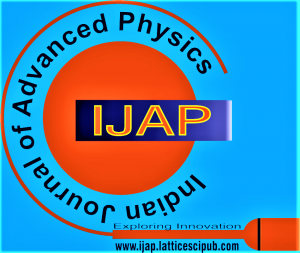![]()
Space Physics of the Universe and the Evolution of π Space Quantum
Nishant Sahdev1, Chinmoy Bhattacharya2
1Nishant Sahdev, University of North Carolina at Chapel Hill, NC 27599, United States of America.
2Chinmoy Bhattacharya, Austin Paints & Chemicals Private Limited, 3 Ambika Mukherjee Road, Belghoria, Kolkata, West Bengal, India.
Manuscript received on 10 January 2025 | First Revised Manuscript received on 12 January 2025 | Second Revised Manuscript received on 18 March 2025 | Manuscript Accepted on 15 April 2025 | Manuscript published on 30 April 2025 | PP: 1-7 | Volume-5 Issue-1, April 2025 | Retrieval Number: 100.1/ijap.A105705010425 | DOI: 10.54105/ijap.A1057.05010425
Open Access | Editorial and Publishing Policies | Cite | Zenodo | OJS | Indexing and Abstracting
© The Authors. Published by Lattice Science Publication (LSP). This is an open-access article under the CC-BY-NC-ND license (http://creativecommons.org/licenses/by-nc-nd/4.0/)
Abstract: The mathematical constant π, defined as the ratio of a circle’s circumference to its diameter, has remained an important base of mathematics and science, yet its origins and connections to fundamental universal properties remain elusive. Traditionally viewed through a mathematical lens, this study proposes a novel perspective, linking π to the space-time of the universe. Building on Lord Kelvin’s mathematical formulation involving the square root of π, we explore its physical significance as a measure of the interplay between surface and bulk properties of matter in the cosmos. We demonstrate that π governs critical relationships in spatial pressure dynamics, linking “direct space,” “inverse space,” and “hybridised space” in equilibrium. Furthermore, π is shown to underlie the transition between bulk and surface phenomena, influencing fundamental processes such as harmonic motion. These findings suggest that π is not merely a mathematical abstraction but a universal parameter deeply embedded in the structure and dynamics of space-time. This perspective opens new avenues for understanding π in relation to the physical universe, offering insights into its non-converging nature and its role as a driving force in cosmic processes.
Keywords: Mathematical Constant π, Space-Time Fabric, Surface and Bulk Phenomena, Spatial Pressure Dynamics, Universal Parameters.
Scope of the Article: Mathematical Physics
